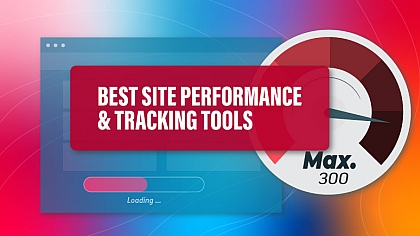How to Write Compelling Content for your eCommerce Website
eCommerce websites play a vital role in driving sales. If there is anything that online merchants want to achieve through their websites is sales. A functional eCommerce website is characterized by a range of elements streaming from mobile compatibility, to effortless navigation, and fonts.

Similarly, the aesthetics of a website matter a lot as they play a crucial role in cultivating the “first impression”. Therefore website owners must assess website fonts to ensure that they align with a brand’s image and message. However, beyond that, is the element of content. Apart from being judged by their speed and aesthetics, eCommerce websites are pronounced authentic depending on their content.
Quality content can convince consumers to buy and as well opt for the same particular eCommerce website again due to its authenticity. Therefore, brands must invest their time in creating effective content for website visitors to take the required action.
Without wasting time, let’s look at some of the most reliable tips you can consider to produce compelling content for an eCommerce website.
Understand the Target Audience
If there is anything that content writers must understand before creating content is the target audience. Understanding the target audience can help writers produce content that meets a user’s expectations. Precisely, knowing whom you’re writing for allows you to identify the required search terms and language that the site visitors expect.
For example, writing content for a beauty products website doesn’t require the same language as when creating content for children’s resources. You may adopt a casual tone when writing content for a beauty website, but the latter will require you to use a simple and professional tone. Understand your target audience’s demographics and expectations to create content that resonates with their needs.
Do a Competitor Analysis
Competitor research is a strategy of identifying competitors’ strengths, and weaknesses and discovering your brand’s uniqueness and opportunities. Consider competitor research as a SWOT Analysis because it can help you find insights that can push your brand through audiences.
While performing a competitor analysis, you must focus on attaining new marketing tactics that can help your eCommerce website compete effectively. Also, understand the type of content and keywords that your competitors use. Generally, you must determine who your competitors are, why they stand out, and how their tactics can benefit your brand.
Besides that, you must assess your website’s performance. Use Google Analytics to understand where your website visitors come from, the competitors they follow, and the best-performing pages on your site. This will help you plan your website content accordingly.
Take a Storytelling Approach
Whether you want to retain customers or attract new ones, you must have a reason that can to convince them to stay. Modern customers love brands with a story and indeed, this is what makes them stay. The more a website visitor bonds with your story, the chances of him or her staying.
Consider a storytelling approach while writing your website content. Include themes that define your brand and certainly those that make it unique. Create an “About Us” and “Contact Us” page. Provide your brand’s story i.e. how it was birthed and its mission. In this way, you would have cultivated ground for customer relationships.
Define Content Type
An eCommerce website can comprise different forms of content. For example; blogs, product descriptions, and landing page content. If you want to run a performing eCommerce website, you must understand the type of content you need and how to create it. Precisely, landing page content usually consists of less text and is coupled with imagery.
Create high-quality landing pages i.e. with quality content, relevant keywords, and appealing images. Similarly, with product descriptions. Remember that customers who come to your eCommerce website are either researching for information or want to buy. Therefore create product descriptions that dimensionally explain your products and as well convince a website visitor to make a purchase.
Avoid creating long product descriptions, otherwise, include buttons i.e. “learn more” for site users to discover more information if they wish to. Similarly, create a blog section. It will help you in providing more information about your products. It will also help in enhancing your SEO strategies like interlinking and link building.
All in all, pay attention to the word count depending on the type of content you are writing.
Include Testimonials & Reviews
An eCommerce website is never complete without testimonials and reviews. If you want to attract more customers and build strong relationships with customers, then include testimonials and reviews on your website. Reviews are very powerful in convincing online visitors to take the necessary action; whether making a purchase or contacting the business.
Invsep indicates that 90% of online shoppers read reviews before visiting a business and many of them visit the physical store after reading reviews online. Therefore, incorporate reviews and testimonials in your eCommerce website. Let not the negative ones put you off. These are generally avenues to assess your brand’s strengths and weaknesses.
Add-Ons
These include CTAs, bullet points, colours, and typography. Add-ons are essential when it comes to publishing compelling content. You may have a good website design, but without quality content and the necessary add-ons, website users may find it difficult to interact with or understand your content. Therefore, choose brilliant colours and bullet points to help users have a remarkable experience on your site.
Quality content can drive sales and optimize ROI. It can help a brand build authority on the World Wide Web and usher a business into new audiences. Therefore, if you wish to write compelling content for your eCommerce website, consider the tips detailed here. They will help you create enthusiasm in your website, and visitors, increase page session duration and rank highly on SERPs.















